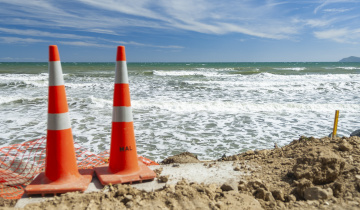Damming water for urban use, hydro-electric power generation, irrigation, and other industrial and commercial uses.
New Zealand has thousands of dams, most of which are small water supply dams on farms. However, more than 400 dams have storage capacities greater than 18 million liters. They range in height from 2 m to 118 m (Benmore Dam on the Waitaki River). Some of these large dams were built to store water for irrigation, others for power generation, and others for domestic and industrial supply or flood water control.
Large dams have flooded valleys, raised lake levels, and have the potential to reduce the flow of major rivers to residual trickles. Dams alter the natural flow of water, which in turn alters the habitat for mahinga kai species to live, migrate, and breed. Even small dams can be insurmountable obstacles to native fish, many of which need to migrate to estuaries or the ocean in order to complete their life cycle. Altered water flow can also lead to erosion of river banks and disruption of habitats.
A resource consent from your regional council is required to dam water whether there is already an existing structure or it is a proposed new structure. It is very difficult to get a resource consent to build a new dam unless there are clear environmental benefits and there are no other alternatives available (i.e., tank water or groundwater).





